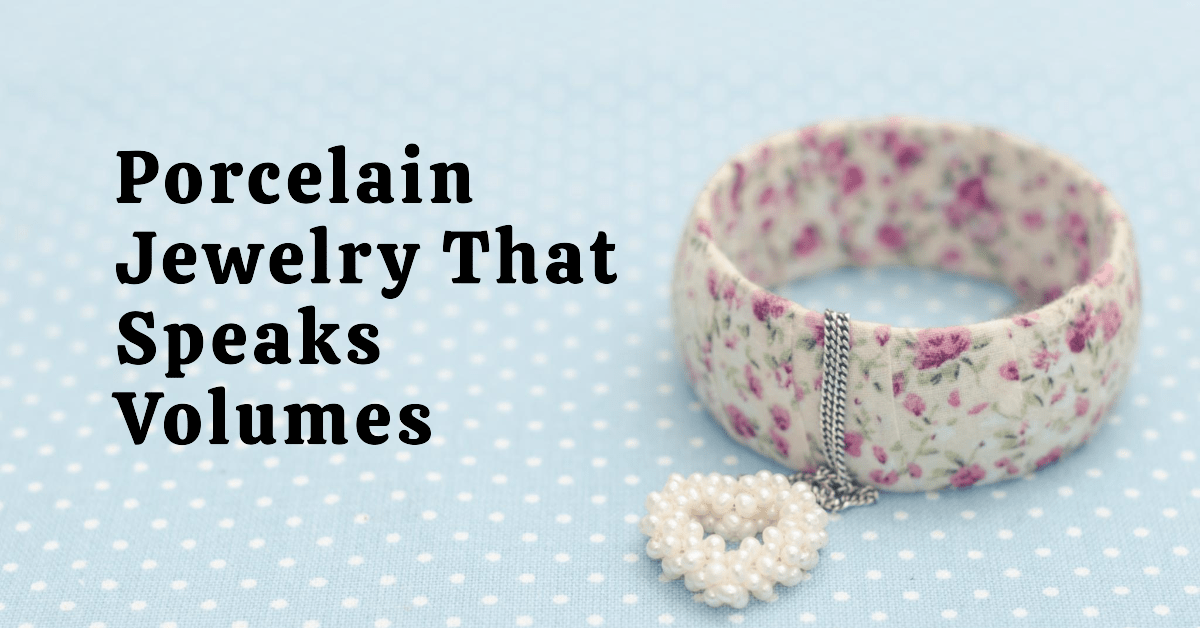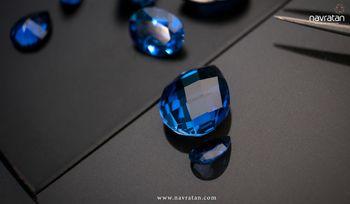Porcelain jewelry has long been admired for its beauty and elegance. It is a material that can make a bold and striking statement, captivating the attention of those who see it. The appeal of porcelain jewelry lies in its unique artistic value, durability, versatility, and the intricate process of creating it. This article aims to explore the various aspects of porcelain jewelry, including its artistic value, the process of its creation, the different styles available, how to style it, and proper care and maintenance.
Understanding the Appeal of Porcelain Jewelry
Porcelain jewelry has a timeless appeal that has captivated artists and jewelry enthusiasts for centuries. One of the reasons for its enduring fascination is its artistic value.
The Artistic Value of Porcelain
The craftsmanship and attention to detail required to create porcelain jewelry make it a true piece of wearable art. Each piece is meticulously handcrafted, showcasing the skill and talent of the artist. The delicate porcelain material allows artists to sculpt intricate shapes and designs that cannot be achieved with other materials. From delicate floral patterns to intricate filigree, porcelain jewelry is a testament to the creativity and precision of its creators.
Moreover, the smooth, lustrous surface of porcelain adds to its allure, giving it a distinct and luxurious appearance. The glaze applied to the porcelain enhances its shine, creating a captivating play of light and shadow. This unique characteristic makes porcelain jewelry stand out, catching the eye and drawing admiration from all who behold it. If you’re looking for the perfect finishing touch for your porcelain jewelry, consider adding a stunning Cake Topper to make it even more special.
The Durability and Versatility of Porcelain
Despite its delicate appearance, porcelain jewelry is surprisingly durable. The firing process that porcelain undergoes makes it highly resistant to scratches and tarnish. This durability ensures that porcelain jewelry can withstand the test of time, becoming cherished heirlooms that can be passed down through generations.
Furthermore, porcelain jewelry offers remarkable versatility in terms of style. The material can be dyed and glazed in various colors, allowing for a wide range of design possibilities. Whether it’s a vibrant blue pendant or a soft pastel bracelet, porcelain jewelry can be customized to suit individual preferences and fashion trends. This adaptability makes it a popular choice for those seeking unique and personalized accessories.
The Process of Creating Porcelain Jewelry
Crafting porcelain jewelry is a meticulous process that involves several steps. From preparing the clay to applying the glaze, each stage requires precision and artistic skill. Let’s delve deeper into the fascinating world of porcelain jewelry making.
From Clay to Masterpiece: The Making of Porcelain Jewelry
First, the artist starts by preparing the porcelain clay. This clay is specially formulated to have a fine texture and high plasticity, allowing it to be easily molded into intricate shapes. The artist carefully measures the clay and mixes it with water to achieve the perfect consistency.
Once the clay is ready, the artist begins shaping it into the desired form. Whether it’s a delicate pendant, an elegant bracelet, or a stunning pair of earrings, the artist’s hands work with precision and finesse to bring their vision to life. Every curve, and every detail is meticulously crafted, ensuring that the final piece is a true work of art.
After the initial shaping is complete, the clay jewelry is left to dry. This drying process is crucial as it removes any excess moisture from the clay, making it more durable and less prone to cracking during firing. Once the clay has dried completely, it is ready for the next step.
The dried clay jewelry is carefully placed in a kiln, a specialized oven used for firing ceramics. The kiln is heated to extremely high temperatures, causing a chemical reaction within the clay. This reaction, known as vitrification, transforms the clay into a hard, durable material. The firing process requires precision control of temperature and time to ensure that the jewelry reaches its optimal strength and appearance.
The Role of Glazing in Porcelain Jewelry
Glazing not only adds visual appeal but also plays a crucial role in protecting the porcelain jewelry and enhancing its overall aesthetic. The glaze is a liquid mixture of minerals and pigments that, when applied to the jewelry, creates a thin, glass-like coating.
The artist carefully selects the glaze colors and techniques that will best complement the design of the jewelry piece. Some glazes create a smooth, glossy finish, while others may produce a matte or textured effect. The application of the glaze requires precision and a steady hand, as even the slightest imperfection can affect the final result.
Once the glaze has been applied, the jewelry piece is fired again in the kiln. The high temperatures cause the glaze to melt and fuse with the porcelain, creating a permanent bond. This firing process not only strengthens the jewelry but also enhances the colors and textures of the glaze, bringing out their true beauty.
After the final firing, the porcelain jewelry is carefully inspected for any flaws or imperfections. Any necessary touch-ups or adjustments are made to ensure that the piece meets the artist’s exacting standards. Only then is the jewelry considered complete and ready to be showcased and cherished by its future owner.
Creating porcelain jewelry is a labor of love, requiring patience, skill, and a deep understanding of the materials. Each piece tells a story, reflecting the artist’s creativity and passion. Whether it’s a delicate pendant, an intricate brooch, or a stunning ring, porcelain jewelry is a testament to the timeless beauty of this exquisite art form.
The Different Styles of Porcelain Jewelry
Porcelain jewelry comes in a variety of styles that cater to different tastes and preferences.
Modern vs. Traditional Porcelain Jewelry Designs
Traditional porcelain jewelry often features classic motifs and intricate hand-painted designs that showcase the rich cultural heritage of porcelain craftsmanship. On the other hand, modern designs may incorporate contemporary shapes and patterns, offering a more minimalist and edgy aesthetic.
Color and Texture Variations in Porcelain Jewelry
The beauty of porcelain jewelry lies in its ability to mimic various materials, such as marble, wood, or even precious stones. The colors and textures available are endless, allowing individuals to find pieces that perfectly complement their personal style.
How to Style Porcelain Jewelry
Styling porcelain jewelry can be a creative and fun process.
Pairing Porcelain Jewelry with Different Outfits
Porcelain jewelry can add an elegant touch to both casual and formal outfits. To create a balanced look, consider wearing porcelain jewelry as a statement piece with simpler clothing, allowing the jewelry to take center stage. Alternatively, you can layer delicate porcelain necklaces or stack porcelain bracelets for a more bohemian-inspired look.
Choosing the Right Porcelain Jewelry for Your Skin Tone
When selecting porcelain jewelry, consider your skin tone to find pieces that will enhance your natural beauty. Fair skin tones may complement pastel or lightly colored porcelain jewelry, while darker skin tones can carry off bold and vibrant hues with ease.
Caring for Your Porcelain Jewelry
Proper care and maintenance are essential to ensure the longevity of your porcelain jewelry.
Cleaning and Maintenance Tips for Porcelain Jewelry
To keep your porcelain jewelry looking its best, gently wipe it with a soft cloth after each wear to remove any oils or residue. Avoid exposing your jewelry to harsh chemicals or extreme temperatures, as they can cause damage. If necessary, you can clean your porcelain jewelry with a mild soap and water solution, but always be cautious and avoid soaking it for prolonged periods.
Proper Storage of Porcelain Jewelry to Ensure Longevity
When not wearing your porcelain jewelry, store it in a clean, dry place to protect it from dust and moisture. Consider storing each piece separately in a soft pouch or lined jewelry box to prevent scratches and damage.
Porcelain jewelry is a stunning choice for those looking to make a statement with their accessories. Its artistic value, durability, and versatility make it a unique and captivating choice for any discerning jewelry lover. By understanding the appeal of porcelain jewelry, appreciating the process of its creation, exploring different styles, and learning how to style and care for it properly, you can fully embrace the bold and beautiful nature of this exquisite material.





